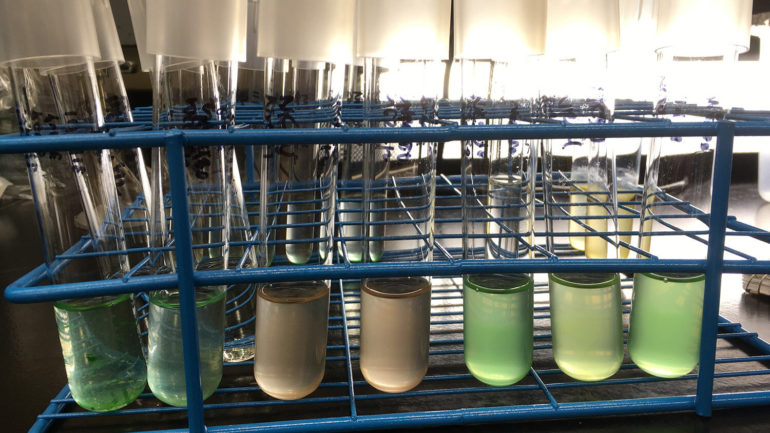Research from North Carolina State University shows that extreme weather events, such as hurricanes and increased precipitation, affect both the amount and the composition of picophytoplankton in the Neuse River Estuary. The work is a first step in determining how a wetter climate may affect the estuarine ecosystem.
Picophytoplankton are defined as any phytoplankton measuring less than three micrometers in size. Although well studied as part of the oceanic ecosystem and food web, picophytoplankton are understudied in estuarine systems, even though they occur in significant numbers within these environments.
“Picophytoplankton are important primary producers in aquatic ecosystems,” says Ryan Paerl, assistant professor of marine, earth and atmospheric sciences and lead author of the research. “They provide food for larger microorganisms, play a role in carbon fixation and cycling, and are sentinels of good ecosystem health. So understanding the effect of moderate to extreme precipitation events on these tiniest members of the ecosystem gives us a more complete sense of impacts of storms on estuaries and the life within them.”
Paerl and his team conducted a study of picophytoplankton numbers and composition in the Neuse River Estuary—a major component of the second largest estuary in the lower U.S.—from July 2017 to December 2018, taking monthly or bimonthly samples at 11 sites along the estuary and using flow cytometry to identify the amount and composition of picophytoplankton.
During “stable” conditions—warm, sunny weather—picophytoplankton were found in concentrations of 1 million cells per milliliter. However, increased precipitation overall and the arrival of Hurricane Florence in September 2018 had huge impacts on the picophytoplankton in the estuary, bringing numbers down at least a thousand-fold, to 1,000 cells per milliliter or fewer.
The composition of picophytoplankton changed following these extreme weather events as well, from primarily cyanobacteria to primarily picoeukaryotic phytoplankton (PEUK).
“We saw that precipitation and resulting increased river flow acts like a hose on these picophytoplankton, flushing them out of the estuary,” Paerl says. “Then the PEUKs have mini-blooms after the flushing events. They do really well and grow very quickly after disturbances. The good news for the food web is that PEUKs often can produce excellent nutrients, like fatty acids, and PEUKs are desirable prey so their growth and consumption could be giving the food web a quick shot in the arm after these events.”
As recent climate reports predict wetter weather in the southeastern U.S., the researchers think that the PEUKs may become more important players in estuarine ecosystems than they are currently.
“Picophytoplankton make up an average of 40% of all phytoplankton biomass in the Neuse River estuary, and that number can be over 70% during stable warm summer months,” Paerl says. “And these picophytoplankton are really impacted by storms—even those that aren’t hurricane strength. The result is a shift in concentration and population that could have long-term effects on food webs and biochemistry in the estuary.”
The work appears in Scientific Reports and was performed in partnership with the UNC-Chapel Hill Institute of Marine Sciences (UNC-IMS) Neuse River Estuary Modeling and Monitoring Project (ModMon), which is led by Hans Paerl and supported by the North Carolina Department of Environmental Quality, as well as the Lower Neuse Basin Association. Former NC State graduate student Rebecca Venezia and current Ph.D. student Joel Sanchez also contributed to the work.
Two decades of hurricanes change coastal ecosystems—increase algae blooms, fish kills, dead zones
More information:
Ryan W. Paerl et al, Picophytoplankton dynamics in a large temperate estuary and impacts of extreme storm events, Scientific Reports (2020). DOI: 10.1038/s41598-020-79157-6
Provided by
North Carolina State University
Citation:
Wetter weather affects composition, numbers of tiny estuarial phytoplankton (2021, January 25)
retrieved 26 January 2021
from https://phys.org/news/2021-01-wetter-weather-affects-composition-tiny.html
This document is subject to copyright. Apart from any fair dealing for the purpose of private study or research, no
part may be reproduced without the written permission. The content is provided for information purposes only.



